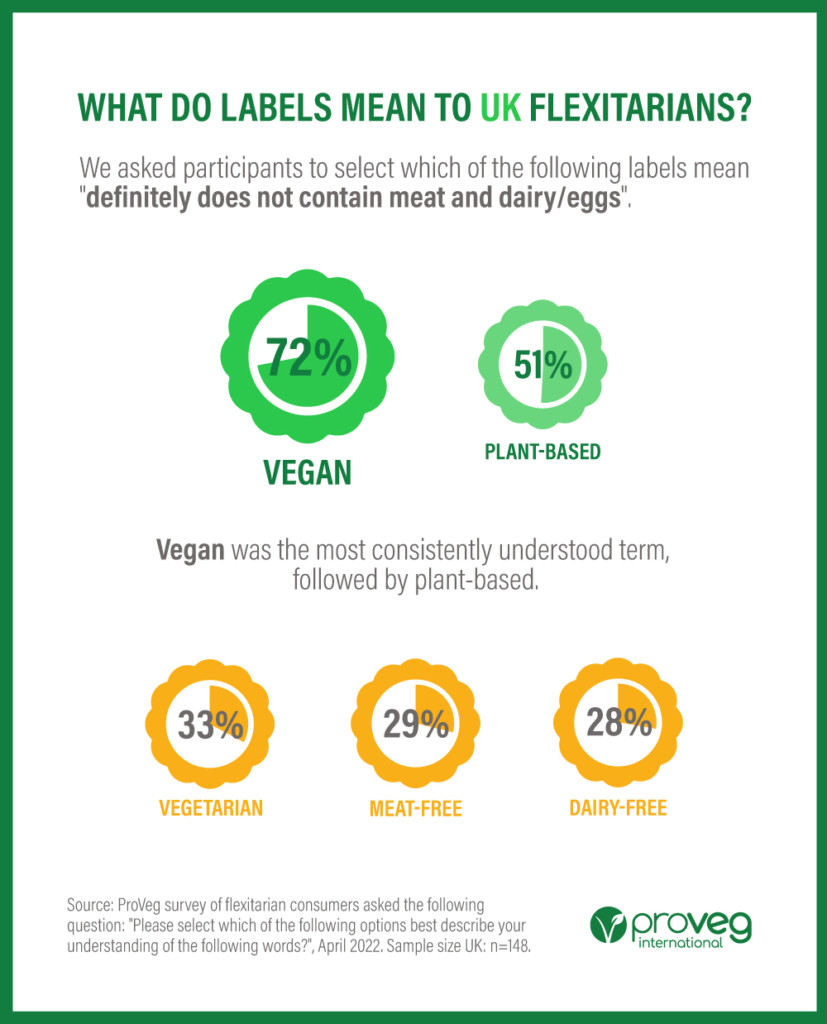When marketing meat-free products, brands and retailers have a choice of terminology: ‘vegan’, ‘plant-based’, or both. But which terms appeal to flexitarian consumers the most? And how well is each term understood? In ProVeg International’s new article, you’ll learn which terminology resonates with which demographics and countries, and how to maximise the appeal of your plant-based alternatives.
For now, let’s find out a little bit more about the term ‘vegan’ on product packaging…
Pros of labelling a product as ‘vegan’
The term ‘vegan’ is well-understood by flexitarians in English-speaking countries, with 72% of Brits and 64% of Americans understanding that a vegan product ‘definitely does not contain animal meat, eggs, or dairy’. By comparison, only 51% of flexitarian Brits and 54% of flexitarian Americans believe that the same statement applies to products labelled as ‘plant-based’.

The term ‘vegan’ is becoming better understood internationally. This can, in part, be attributed to the increasingly global annual Veganuary campaign, which had 620,000 sign-ups in 2022.
Cons of labelling a product as ‘vegan’
Firstly, there is no formal legal definition in the UK or EU regarding a vegan or plant-based product. This is perhaps an underlying cause of consumer confusion, as the two terms are used interchangeably across the Global North with varying meanings. That’s why it’s so important that products get V-label or equivalent certification, as it’s the most reliable way to give consumers seeking 100% animal-free products the confidence that might otherwise be lacking based on terminology alone.
Secondly, the term ‘vegan’ may lead some flexitarians or mixed-eaters to think that a product isn’t intended for them. So what’s the solution if you still want to use the V-word? Make it discrete, or put it on the back of the product. Flexitarians won’t be put off, and vegans will always be motivated to check the back-of-pack, so you’ll still be reaching both segments. Again, using the V-label helps to bypass this problem as it’s a discrete indicator that dedicated vegan consumers know to look out for.
—
If you are interested in learning more about the pros and cons of other terminology such as plant-based, as well as the variability in appeal between countries, click here to read the full article. For even more insight into this topic and others, check out ProVeg International’s full catalogue of articles on the ProVeg New Food Hub.





